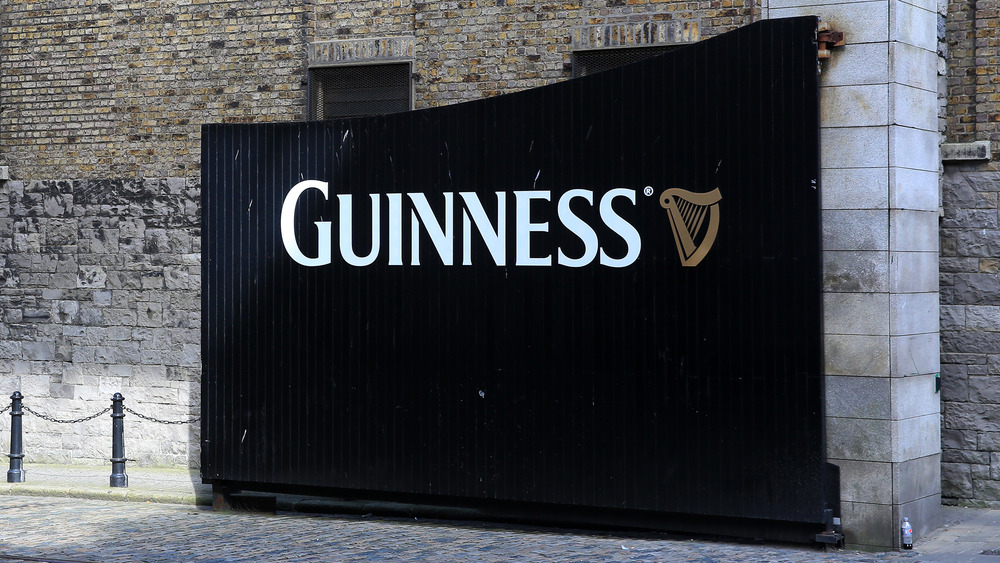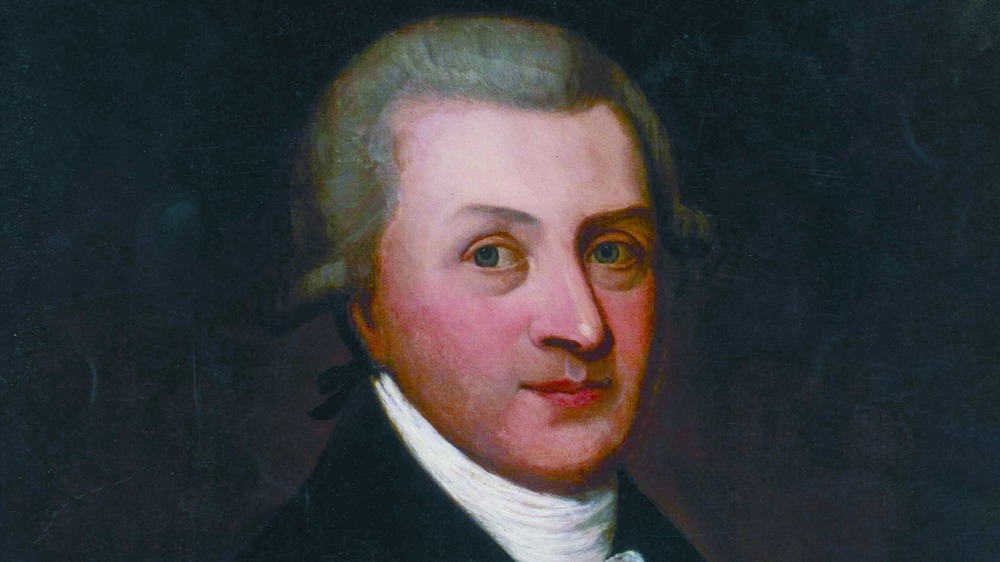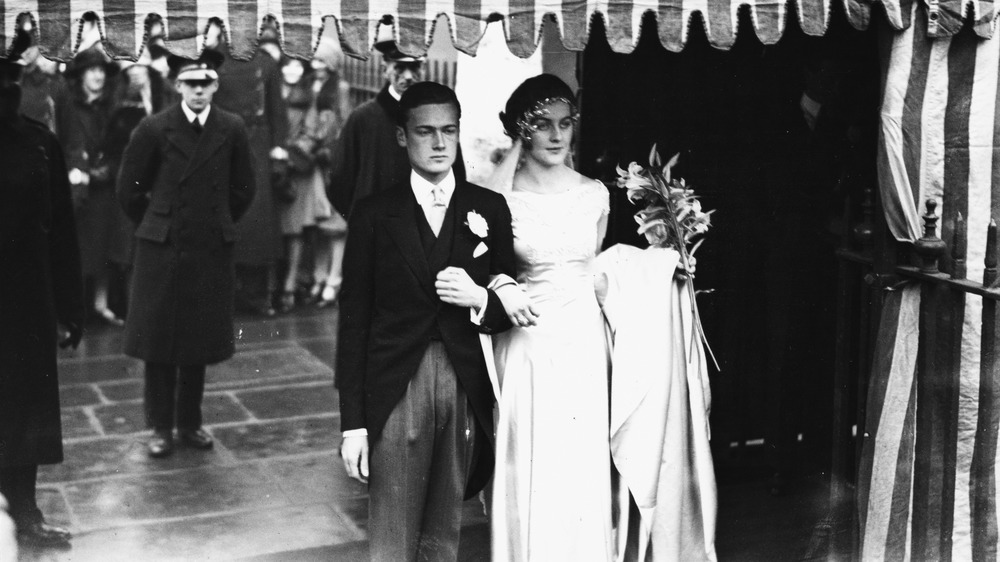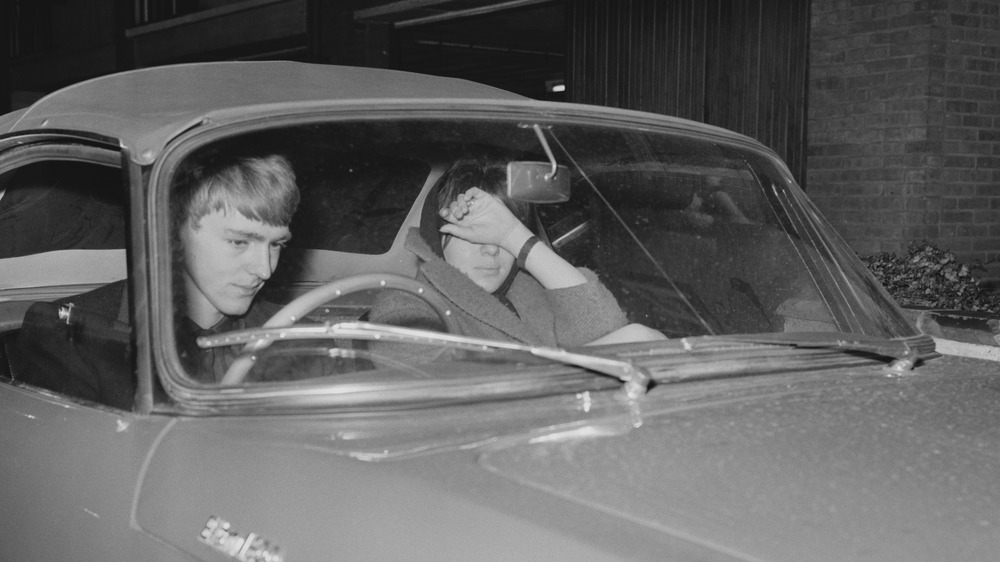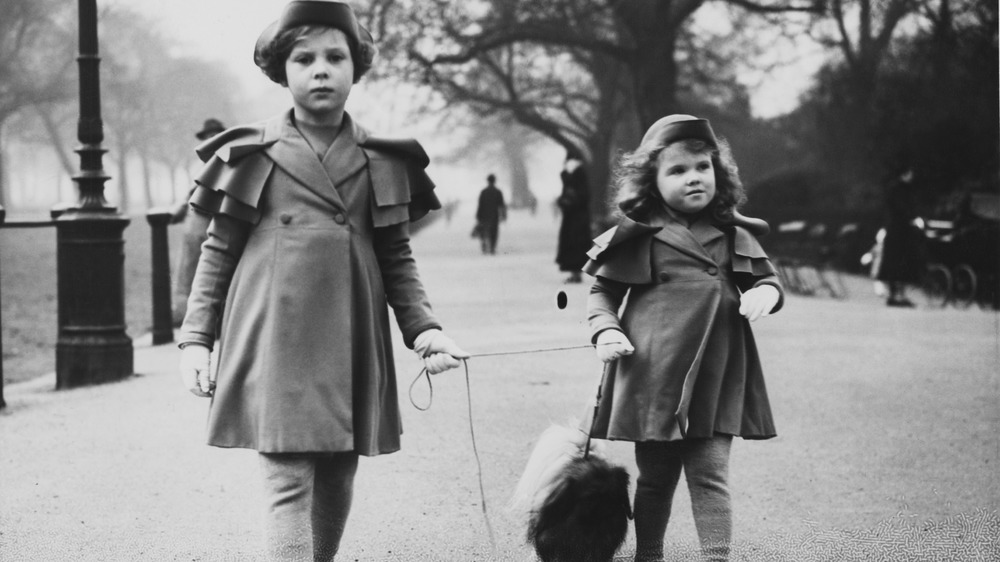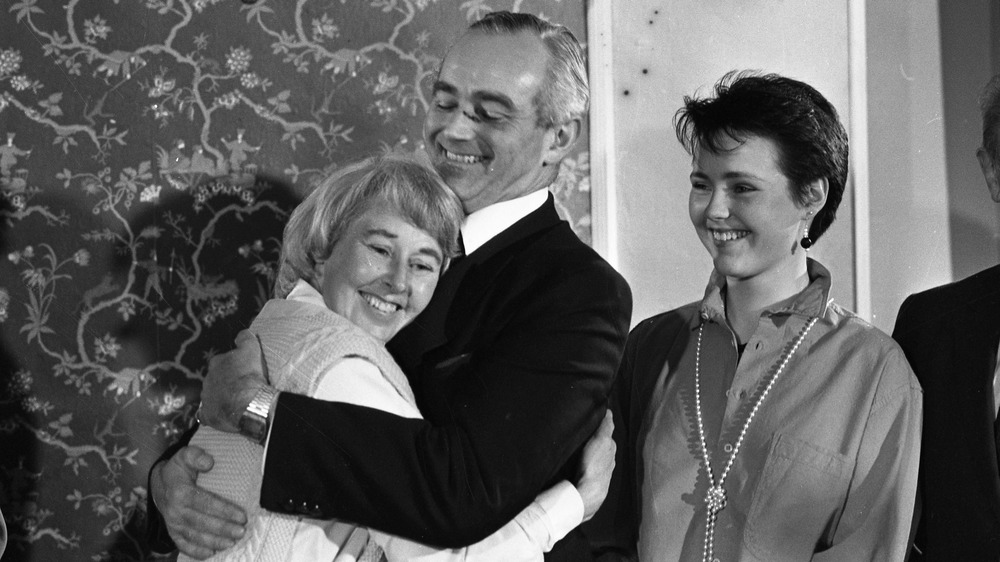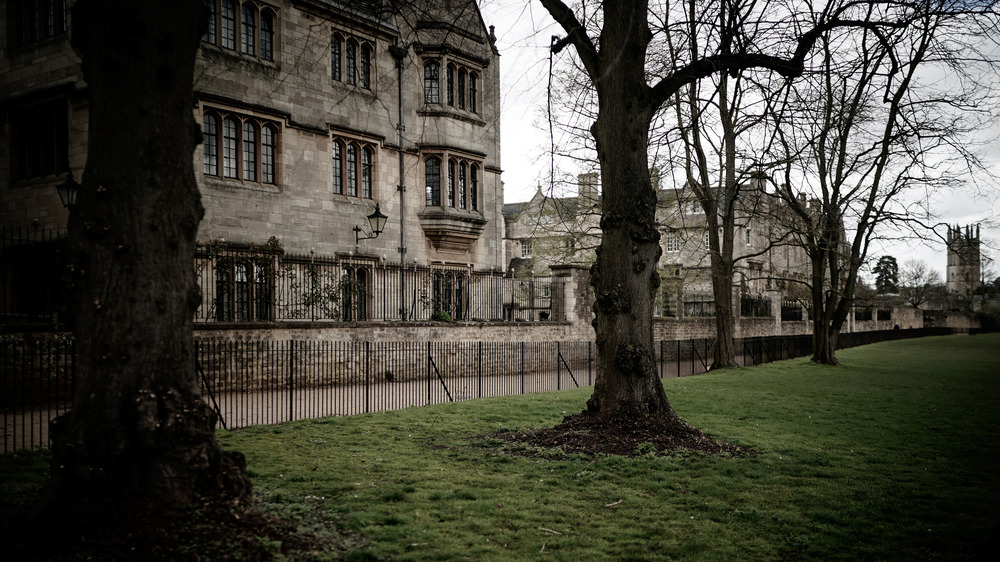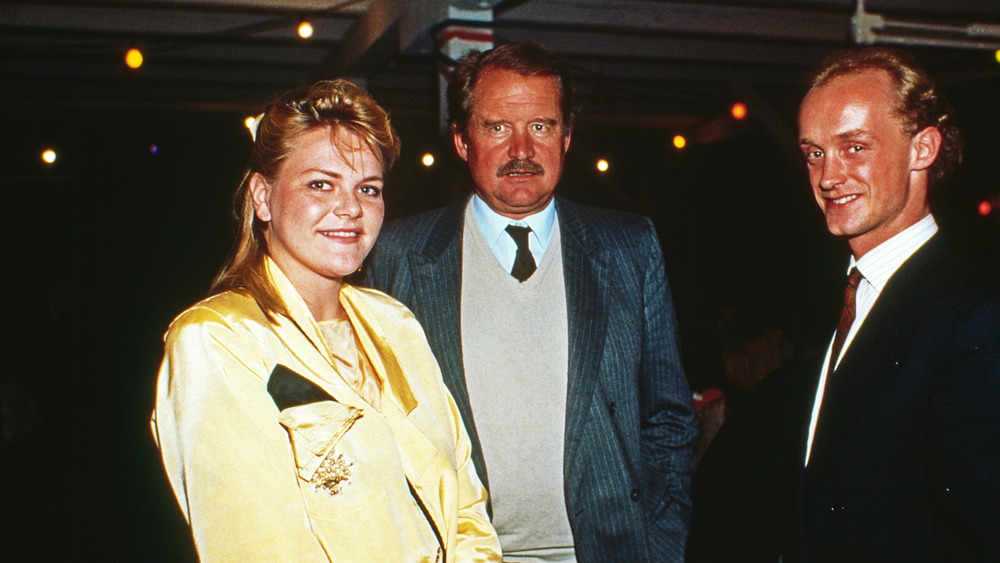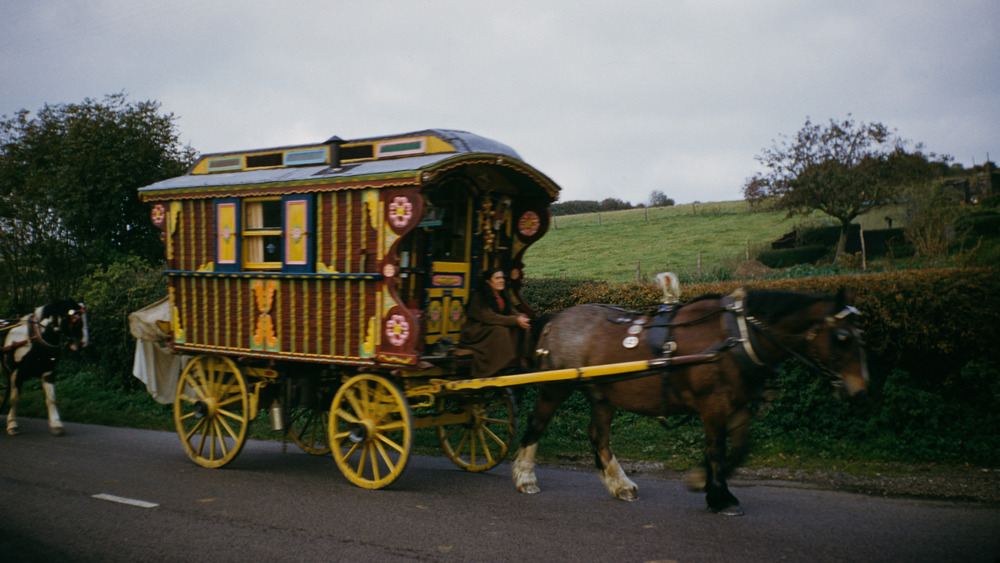The Tragic Truth About The Guinness Family Curse
The name Guinness is likely to conjure up images of the legendary Irish beer that is loved all over the world. The origins of the brewery began in the mid-18th century, with the Guinness family amassing a great fortune in the centuries to come. With aristocratic titles and plenty of money, the Guinnesses had a recognizable and prominent presence in society. But with that spotlight also came scrutiny.
Over the years, a pattern of publicly tragic incidents emerged that has fueled rumors of a Guinness family curse. Of course, it's much more likely that the tragedies were simply coincidences or a side effect of their extraordinary circumstances. In fact, according to The Irish Times, the family has also been quoted dismissing the idea of a curse, stating that "any big family will have its share of grief." But as we delve into the series of unusual Guinness family deaths, it's certainly easy to think that some great hex is at work. Here is the tragic truth of the Guinness family curse.
Cursed since the beginning or just the norm?
For some, it may be tempting to consider the start of the Guinness family curse as lying with the founder of the Dublin brewery himself, Sir Arthur Guinness. According to Irish Central, the original brewer of the famous beer had 21 children with his wife Olivia Whitmore but outlived more than half of them, with 11 of his children dying before they reached adulthood.
Now, by today's standards, having just a single child die would already be considered a tragedy. But Guinness and his family were from the 18th century, a time where the life expectancy was much lower and the child mortality rate was high. According to Our World In Data, before the 19th century, nearly half of all kids died before the age of 15, with most of the world having an average youth mortality rate of 46.2 percent. So, for the Guinnesses, outliving half of their children was something they likely expected. No tragic curse there.
By his time's standards, Arthur Guinness actually seemed to have a great life. He was born into an aristocratic family, established a legendary business, and even lived to the age of 78! That's more than double the average life expectancy back then, according to historical demographer Jona Schellekens. After his death, there were tales of alcoholism and mental illness plaguing his grandchildren and descendants, but it wasn't until the 20th century that a pattern of tragedies begin to be noticed by the public.
The assassination of Lord Moyne
Born in 1880, Walter Edward Guinness, or Lord Moyne, was the great-great-grandson of Arthur Guinness, a friend of Winston Churchill, and the British minister resident of the Middle East. As told by historian Bernard Wasserstein, on November 6, 1944, when Lord Moyne was pulling into the driveway of his residence in Cairo with his chauffeur, secretary, and ADC, two young men were spotted near the entrance. The men attacked the group, shooting the chauffeur in the chest and firing three shots at Moyne through the window of the car. While the driver died instantly, Moyne was taken to the hospital and operated on before dying later that day.
Caught while running away from the crime scene, the assassins were identified to be two members of the underground terrorist organization Lohamei Herut Yisrael (Lehi), meaning "Fighters for the Freedom of Israel." The assassination of Lord Moyne was both politically and historically significant and was the first high-profile tragedy of the Guinness family would be the basis for the curse narrative that took off in the 20th century.
Bryan Guinness was abandoned by a Mitford sister
Even before the assassination of Lord Moyne, though, the Guinness family had an unfortunate scandal. According to The History Press, Bryan Guinness, the son of Lord Moyne, who was a man of gentle nature with a willingness to please, found himself intertwined with one of the infamous Mitford sisters, Diana Mitford. Married in 1929, Bryan and Diana were well-known members of the Bright Young People (also named Bright Young Things), a group of young aristocrats and socialites in 1920s London, per NPR. The novel Vile Bodies by Evelyn Waugh was even dedicated to the couple.
But things went downhill in 1932. As told by BBC News, that was the year that Diana met Sir Oswald Mosley, who soon became the founder of the British Union of Fascists, and began an affair with him. In 1933, Diana had swiftly abandoned Bryan and their two children for her new lover, marrying him three years later in Berlin in a ceremony that had Adolf Hitler as a guest. Their allegiances would later have the couple imprisoned without trial during World War II, according to Time.
The Guinness accident that inspired a Beatles song
Born in 1945, Patrick "Tara" Browne was the son of Oonagh Guinness and heir to the Guinness Brewery million-pound fortune. According to Rolling Stone, he was a central part of London's social elite in the 1960s. Swinging London, as the revolutionary culture scene of that time was called, was a period where the significance of class distinctions was crumbling down, with aristocrats and newly famous stars mingling freely together. Browne's home was the hot spot for all types of artists, and the young heir became friends with the likes of the Rolling Stones, a young David Bowie, Jimi Hendrix, the Beatles, and more.
On December 18, 1966, Browne was speeding through southwest London in his light blue Lotus Elan sports car when he crashed into a parked van. Rushed to the hospital, he died of his injuries shortly after. He was only 21 years old.
The death of Tara Browne was still making headlines a month later. The coroner's report covered in The Daily Mail in January 1967 began the inspiration for a Beatles song, with John Lennon starting the track and bringing the newspaper over to Paul McCartney's place to finish it. Starting off with "I read the news today, oh boy" and including the line "he blew his mind out in a car," Sgt. Pepper's epic final track "A Day in the Life" was inspired by Guinness' accident.
Lady Henrietta Guinness' unhappy end in Italy
The heiress of the Guinness family fortune had a turbulent life of high-profile romances and even a near-death experience. According to the Independent, Lady Henrietta Guinness was with her boyfriend, "Britain's best-known beatnik" Michael Beeby, when he crashed his flame-red Aston Martin in the French Riviera. The accident left her badly injured.
Later, after nearly marrying three different men, including an Italian sous-chef, Beeby, and a hairdresser, she ended up settling down with medical school dropout and chef Luigi Marinori in Spoleto, Italy, and having a daughter. Tragically, in 1978, Lady Henrietta, at the age of 35, threw herself off the Ponte delle Torri bridge there, as reported by The Irish Times. Having been treated for depression for some time, she is known to have once said: "If I had been poor I would have been happy."
If you or anyone you know is having suicidal thoughts, please call the National Suicide Prevention Lifeline at 1-800-273-TALK (8255).
Three more tragedies in 1978
The year 1978 seemed to be particularly "cursed" for the Guinness family. In addition to Lady Henrietta Guinness' death in Italy, that same year saw three more Guinness descendants tragically pass away.
According to The Irish Times, John Guinness, a British diplomat, was involved in a car accident in 1978. While John, who was driving, survived, the accident proved fatal for his four-year-old son, Peter Guinness. Additionally, an unnamed 17-year-old Guinness family member died from a suspected drug overdose. A third descendent, Major Dennys Guinness, was also found dead in a cottage in Hampshire the same year. He had recently been questioned by police about possible firearms offenses, as related by the Financial Review.
Unfortunately, these two overdoses would not be the last for the Guinness family. With many members plagued with addiction, drugs would play a major role in many of the tragedies to follow.
From mother to daughter to granddaughter
Maureen Guinness and her sisters Aileen and Oonaugh (the mother of Tara Browne) were the great-great granddaughters of the first Arthur Guinness. Charming and devious, they were famous among the aristocratic elites and were often known as the golden Guinness girls, according to the Independent.
Maureen was particularly vain and obsessed with social climbing, even into her elderly years. As such, her daughters felt sorely neglected by her and often acted out. For example, a guest at their home recalled one of them pouring a bucket of cold water over his head while he was in bed.
Maureen's eldest daughter, Lady Caroline Blackwood, would famously live a turbulent life as a muse for artists, such as her husbands Lucian Freud, Israel Citkowitz, and Robert Lowell. An alcoholic who struggled to make lasting relationships, Blackwood established an unstable family for her own children. At only 18 years old, Natalya Citkowitz, Blackwood's daughter, would die in 1978 after hitting her head and drowning in a bath while taking heroin, per the Independent.
A kidnapping and a fatal fall
John Guinness was the chairman of the Dublin bank Guinness and Mahon and the sixth cousin of the chairman of the Guinness Brewery. His well-off status made him and his family the target of a kidnapping on April 8, 1986. According to The New York Times, he had returned home from work that day to the sight of his wife and daughter tied up. The abductors attacked him and tied him up as well and then escaped with Mrs. Guinness. A ransom of $2.6 million was demanded for her return. After John freed himself and called the police, it took them eight days to find and free her without payment of the ransom.
Unfortunately, the kidnapping wouldn't be the only traumatic event for this Guinness family. Just two years later, John died from a 500-foot fall on Snowdon Mountain in northern Wales. He was climbing with his wife, son, and three friends.
Olivia Channon overdoses at Oxford
The kidnapping of Jennifer Guinness was not the only incident in 1986. One night in June of the same year, students at Oxford's Christ Church College were celebrating the end of final examinations. Among them was Olivia Channon, the 22-year-old daughter of Trade and Industry Secretary Paul Channon and heiress to the Guinness brewing and banking fortune. The next morning, she was found dead, lying fully clothed on the bed in a friend's dorm room, according to the Associated Press. Channon had overdosed on heroin and alcohol.
Three people were arrested and charged for supplying the heroin, including Channon's best friend Rosie Johnston and her third cousin Sebastian Guinness. The judge reportedly told Guinness that he had been "weak and foolish" despite all his privilege and sentenced him to four months' imprisonment for possession of cocaine and heroin. As reported by United Press International, the incident was a wake-up call to the realities of drug abuse among the elite, with Oxford notoriously becoming known as a wild place for the children of the rich and powerful.
Even German royalty was affected by the Guinness curse
The Guinness family curse seemed to even extend to those around them at times. The Oxford dorm room that Olivia Channon was found in belonged to Count Gottfried von Bismarck (pictured right above), the son of Prince Ferdinand von Bismarck of Germany. He was charged and fined for possession of cocaine and amphetamine sulfate, and at the trial, the count's lawyer foretold that the incident would be a shadow over the head of von Bismarck for the rest of his life, according to the LA Times.
Shaken by her death, von Bismarck vowed that his days of living it up were over after the incident. Unfortunately, he would fail to keep his promise. Throwing sex parties at his flat, he made headlines again in 2006 when one of his guests fell to his death from his roof terrace. A year later, the 44-year-old would be discovered dead with a blackened arm. According to the Independent, he had injected himself with cocaine every hour for nearly 24 hours, leading the examiner to announce that von Bismarck had the greatest amount of cocaine in any body he'd ever seen. The count was officially pronounced dead from a heart attack caused by drug dependency and an overdose.
A sudden and mysterious horse-drawn caravan accident
Sheelin Rose Nugent, the 31-year-old neice of Guinness heir the Earl of Iveagh, was the victim of a freak accident in 1998, as reported by the Independent. October 30 seemed like a normal and calm day when Nugent was driving her horse-drawn Romany caravan on a small road near her mother's home. It was actually her mother's birthday, and she was planning on taking six of her young relatives for a ride in the caravan during the festivities later.
Nugent was an experienced horsewoman, but in the mysterious incident, something spooked her horse and sent it speeding toward a bend in the road. Unable to reclaim control of the animal, she was thrown out of the caravan and crushed to death beneath the wagon. According to witnesses, there were no other vehicles in the area, nor bright lights or loud noises. Whatever scared the horse and caused the accident remains a mystery to this day.
Guinness tragedies persist into 2020
In a year already known for its tragedies, it is perhaps even more unfortunate that the Guinness family was not spared from their "curse." On July 31, 2020, Honor Uloth, the 19-year-old granddaughter of Benjamin Guinness, the 3rd Earl of Iveagh, was involved in a fatal accident.
According to the New York Post, Uloth was at the Guinness mansion in Sussex during a BBQ party with family friends. After soaking in the hot tub, she had decided to take a dip alone in the pool. A short while later, her younger brother spotted her lying unconscious at the bottom of the pool. By the time she was pulled out, she was found to have a broken shoulder and brain injuries. Rushed to the hospital, Uloth passed away six days later.
It is theorized that Uloth hit her head and shoulder on something while she was jumping or entering the pool, rendering her immobile and unconscious as she fell underwater. The family takes comfort in the fact that she spent her last day doing all that she loved with her close friends and family.
